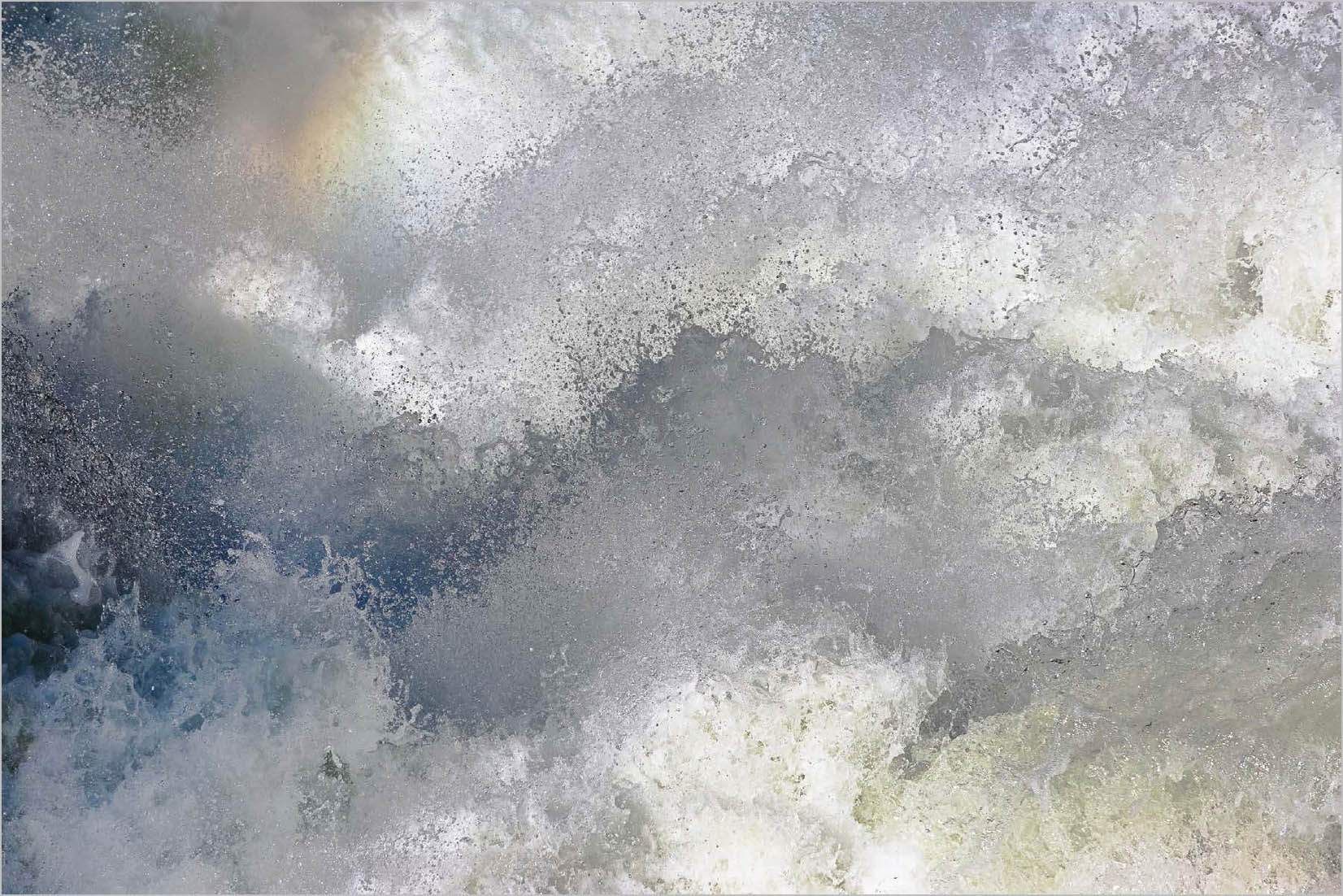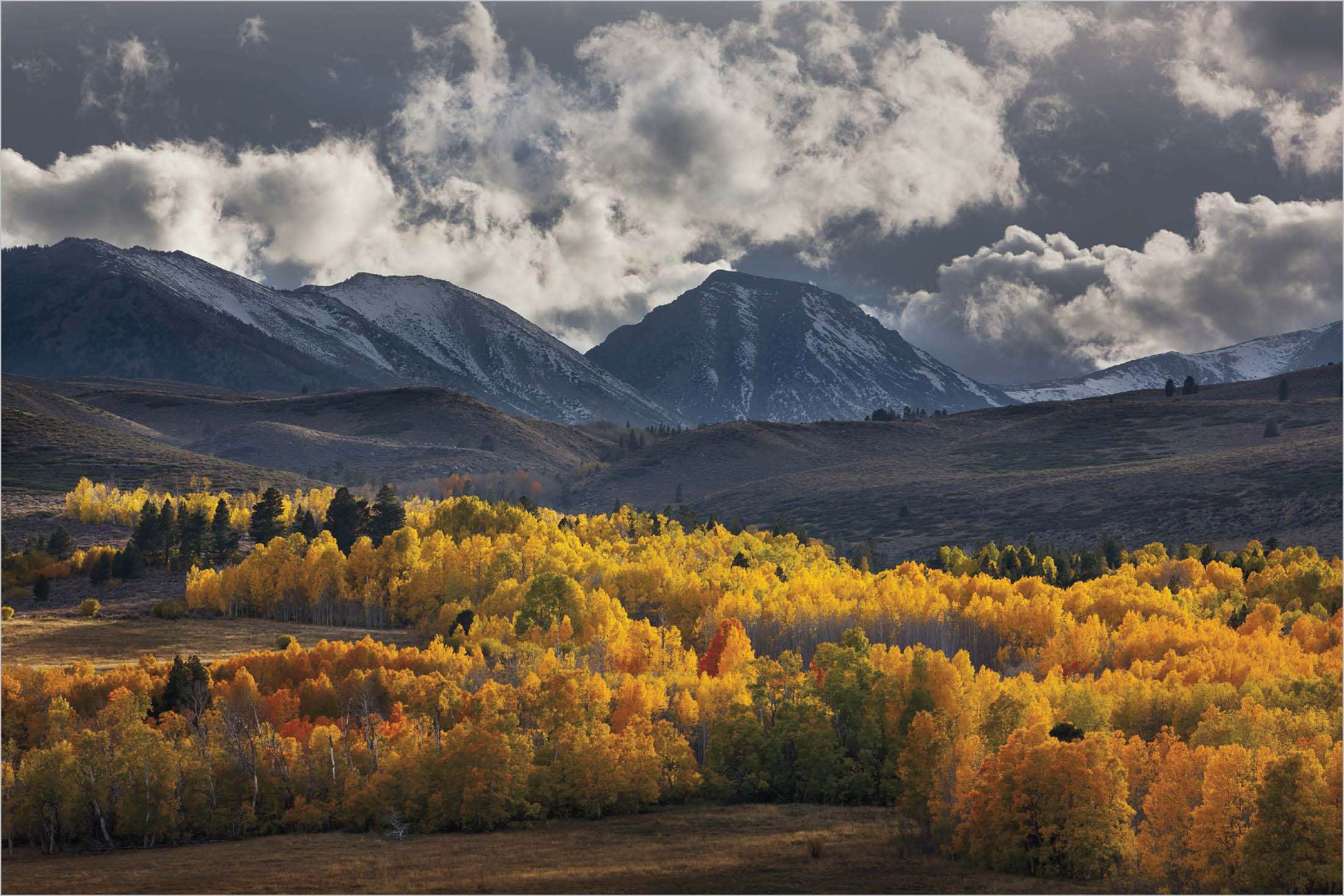GOING WITH THE FLOW
WORK YOUR SUBJECT FOR THE PERFECT PHOTOGRAPH
On a trip to Yosemite Valley in 2011, I spent some time photographing waterfalls. The water levels were still very high, but they were down quite a bit from the highest levels during that remarkable spring. I had been stuck in my office for far too long, working for about two weeks straight catching up with orders. I desperately needed this water therapy.
I had the idea of finding some water details and abstracts at Cascade Falls. I wanted to see what variations I might come up with, like the detail shown on the next page made in 2005 using a fast shutter speed. I worked with bright sunlight again, but doubted I had any worthwhile images, so I ran my errands and returned to the same location in the evening.
The two images presented here are of the same section of the falls; the smaller 2005 image is a detail within the area along the center-left edge of the vertical photo. One of the reasons for showing this is to illustrate how vastly different two interpretations can be. I also want to mention how much I photographed during both of these sessions.
I use the approach of “working the scene thoroughly,” experimenting extensively during my field sessions, especially with photographs of moving water, including waterfalls and subjects such as surf at the beach. I make many frames with the same settings, as each frame is different as the water moves. I also bracket my shutter speeds. I have been photographing moving water for a long time, but I am never quite sure which shutter speed will give the best effect for a given scene. I watch the water carefully, looking for prime moments of action, like especially high leaps of spray. I make a burst of frames, and when I think I’ve caught a good moment, I’ll move on to another shutter speed.
Cascade Falls | Yosemite National Park, California | 2005
For Rock, Water, and Tree, I made around 100 frames total, using about half a dozen shutter speeds. When editing my images from this one day, I had 450 frames made at several locations. For each composition, I had to view each frame with Adobe Lightroom’s Compare View tool to slowly edit down to the best expression of what I saw and felt. Each exposure had subtle differences. Rock, Water, and Tree was made with a 1/2-second exposure, whereas I shot Cascade Falls at 1/1000 second. My point is that it takes this kind of extra effort to push one’s work to the next level. All of the images showed intriguing textures of water motion, but only this one had the distinctive heart shape and sense of motion.
There are some folks who might presume that this approach is sloppy or lazy—a “spray and pray” technique, pun intended. But if used with intense focus on a fast-moving and constantly changing subject, such as a waterfall, the technique can capture nuances that otherwise would be missed. I do believe in photographing with discipline and with as much intentional vision as possible. After all, for twenty years of my career I used a 4x5 view camera and had limited funds, so each exposure was precious. Enjoy the luxury of digital capture as I’ve discussed above, but don’t depend on volume of captures or rescue in Photoshop to be an excuse for lack of attention to the details of lighting and composition. The freedom of this approach can be educational only if the results are studied carefully and learned from. It can also allow the photographer to capture thrilling moments in time, such as the frozen and blurred images shown here, that are beyond human perception.
Aspens and Approaching Storm | Conway Summit, California | 2010

